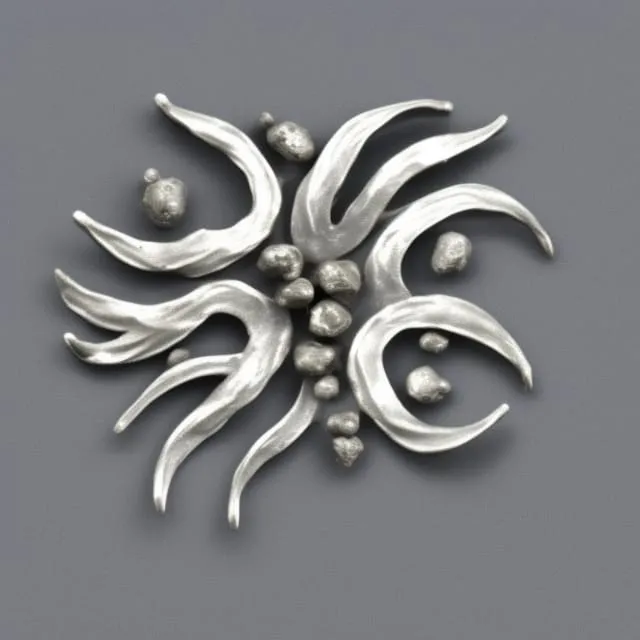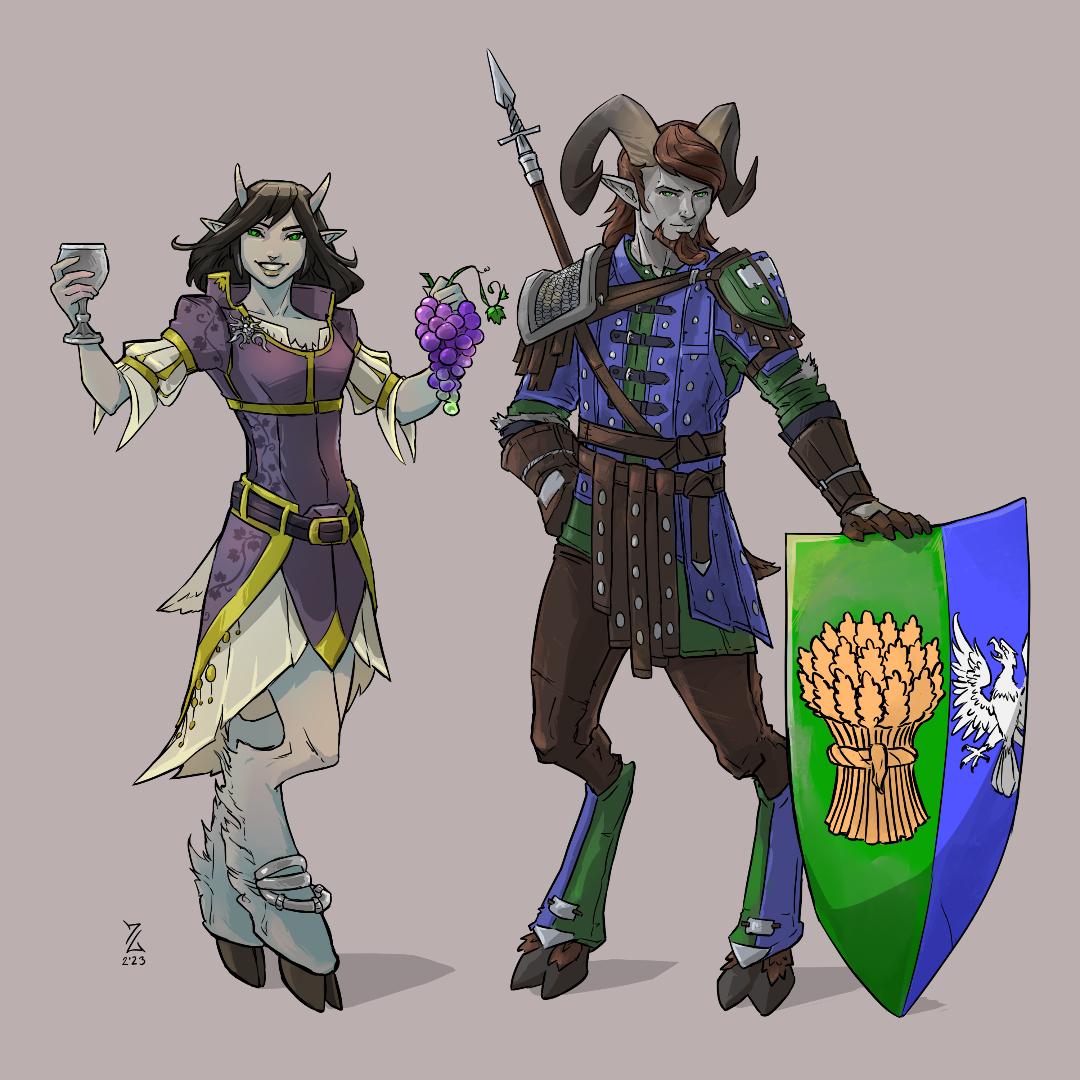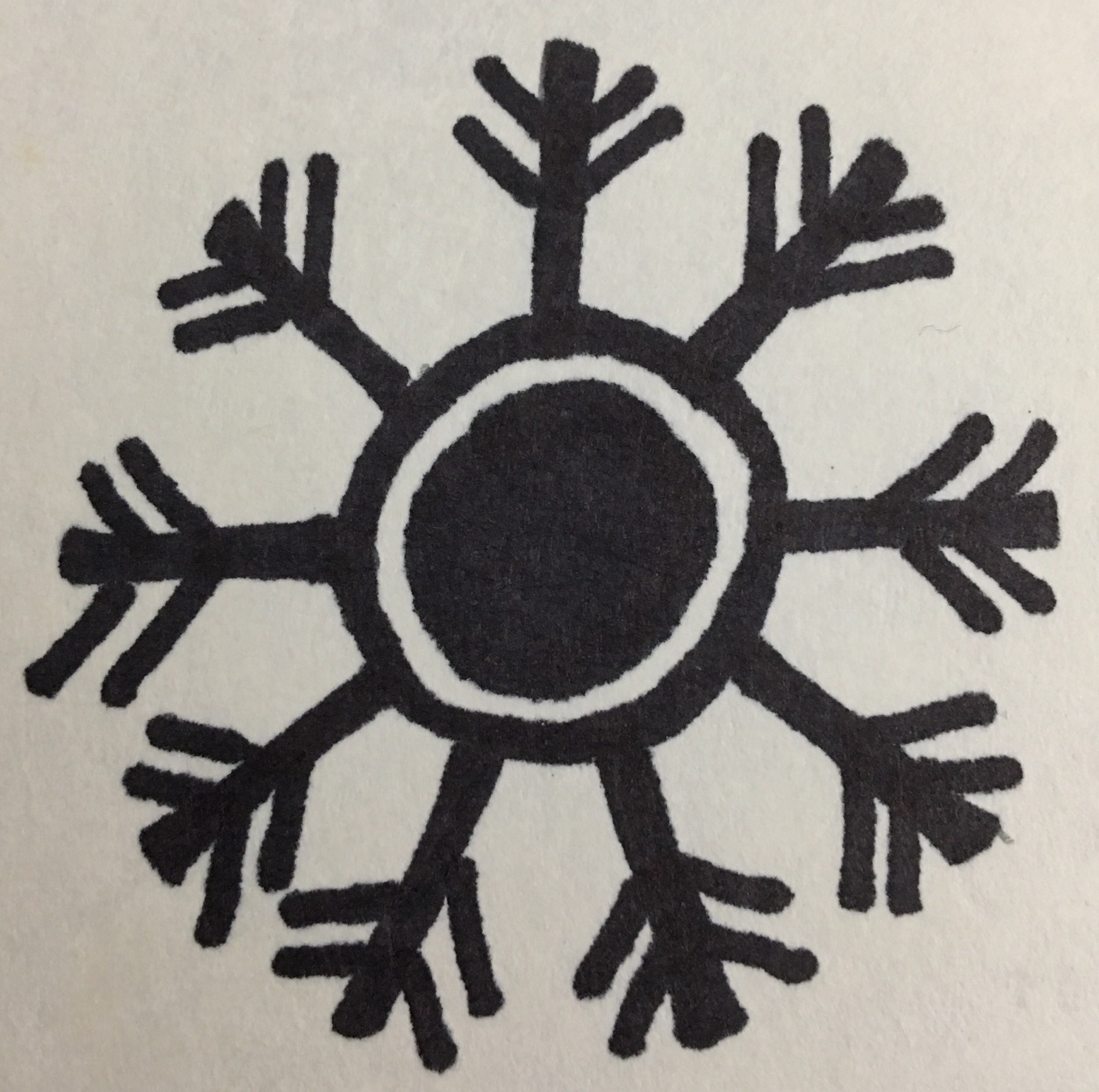Mediterranean satyrs
The Mediterranean satyrs are a wide stretching herd of satyrs that encompasses Fumaya (where they make up about one in a hundred mortals), Uskala (where they make up about one in two hundred mortals), and Swynfaredia (where they make up about one in a hundred fifty mortals), with a few adventerous Mediterranean satyrs wandering farther afield.
It is worth noting that the Mediterranean satyrs all three of these nations they are found in today having been in these area since the the Red Era well before these modern nations existed. They just stayed more or less in one place as human nations rose and fell around them. Most satyrs are loyal to their friends, family, and local communities but are not normally very patriotic to their nation.
The kingdom of Uskala is not exactly a satyr friendly place (largely as a result of King Drosst being prejudced against the Rovers), so satyrs have gradually been migrating out of Uskala. To a lesser extant, Fumaya's politically strong Nonagon has gradually caused satyrs to migrate in.
The Mediterranean Satyrs nearly always manifest dominant Earthy ethnic traits with or without a little bit of secondary elemental ethnicity traits from the other three elements, but that is hardly uncommon in almost any satyr herd.
The Mediterranean satyrs commonly claim that their herd once encompassed the entirity of all West Colassian satyrs and by extension, all other West Colassia satyr herds are groups that diverged from their bloodline in the distant past, but they don't usually rub this "fact" in the faces of their distant cousins if they meet face-to-face.
Mediterranean satyrs are generally well used to dealing humans as they dwell primarily in human dominated lands.
Roughly half of Mediterranean satyrs live nomadic lifestyles but they are not barbarians because they are very creatures of civilization commonly seeking professions that encourage mobility such as entertainers, bodyguards, merchants, reagent foragers, messengers, and circuit preachers.
The other half of the herd usually put down roots somewhere, frequently working at some point in the supply chain for fermented beverages commonly farming grapes, barley, hops and the like and also working at alehouses, taverns, and wineries.
Mediterranean satyrs prefer to settle near places with a large number of travelers passing through including crossroads, river junctions, and to a lesser extent seaports (where the Mediterranean satyrs often meet with Poseidonus satyrs).
Mediterranean satyrs may be about half nomads, half settled but these categories aren't rigid. Many Mediterranean satyrs change homes and vocations multiple times in their lives switching back and forth between sedentary and nomadic lifestyles, simultaneously making sure the sedentary and nomadic Mediterranean satyrs avoid diverging too far culturally and genetically (this supposedly how offshoots of the Mediterranean satyrs diverged into the other West Colassian satyr herds).
Culture
Major language groups and dialects
Almost all Mediterranean satyrs speak Common as their mothertongue and a majority learn Elven as a second language starting at a very young age.
A majority of satyrs name their children with elven style names like most satyrs elsewhere though a few take on local names popular with the human cultures they are surrounded with.
Culture and cultural heritage
Almost all saytrs are musically inclined and Mediterranean are no exception.
Most prefer to crosstrain in a wide variety of musical instruments but wind instruments are especially favored as is singing and dancing.
Mediterranean satyrs commonly enjoying performing arts and storytelling as well.
Beyond artistic expression, Mediterranean satyrs tend to mimic the customs of the humans around them rather than create their own practices.
Shared customary codes and values
Most Mediterranean satyrs work in the ale or wine industry or at least have close family members that do. They embody the universal stereotype of the drunken satyr, but they aren't lazy or unfocused. Mediterranean satyrs believe in working hard and playing hard.
They are very fastidious and professional when making wine and ale (or any other profession they set their sights too). They take great professional pride in the quality of the wine and spirits they produce. Even if they aren't involved in the alcohol industry, they tend to take pride in the quality of their work. They simply relax completely when off-duty.


Ancient Greek Inspired Nami Symbol by me with Nightcafe
Mediterranean satyrs are more pious than most other satyrs and the majority of them worship Nami as their primary patron. It helps that the Rovers run a fair number of wineries and brewers in the lands that Mediteranean satyrs inhabit. Grapes and wine are the sole industry of the Village of Satyrs in Fumaya.
Mediterranean satyrs are disproportionately represented among the Rovers while a few individuals commonly gravitate towards the Lanterns, Testers, Stewards, and the Cult of the Compact. A few oddballs ending up joining the other religious groups from time to time.
Common Etiquette rules
Mediteranean satyrs frequently live semi-nomadic lifestyles. They are gregarious and friendly and they put a lot of effort into being good guests while traveling, trying to entertain their hosts with tales and song while also volunteering to help with chores.
When the tables flip, Mediteranean satyrs strive to be good hosts but they have little patience for guests who seek to take advantage of them.
Outside of formal host/guest relationships, most Mediteranean satyrs are social butterflies. They like to go to public forums, taverns, and other locations where individuals gather to swap stories, exchange gossip, and boast about past deeds.
Common Dress code
Mediterranean satyrs tend to dress practically favoring durable and practical work clothes. Unless they are entertainers or frontline merchants, they rarely spend much on money on effort on dyes or fancy clothes (they are probably going to spill wine or ale on anything fancy anyway).
Like most other satyrs, Mediterranean satyrs are not especially modest and typically show a more skin (or fur) than the humans they live alongside, but given that the humans of the lands they inhabit are lean conservative, Mediteranean satyrs don't needlessly flaunt human fashions either.
Foods & Cuisine
Mediterranean satyrs tend to follow the culinary cues from the humans living around them, but they tend to pay more attention to the quantity and quality of their wine and ale selection.
They also tend to be fond of breads and candied fruit, byproducts of the same crops that make wine and spirits.
In general, they are not picky eaters but Mediterranean satyrs and will accept most nonpoisonous food served to them, but they prefer to avoid bland things. A few Mediterranean satyrs are known as gourmets and some nobles and wealthy merchants go out of their way to hire a Mediterranean satyr chef. Satyr chefs like contrasting very strong dishes serving a mix of very sweet and very savory dishes. Not too surprisingly, a lot of satyr merchants and traders end up involved in spice trade.
Like most satyrs, Mediterranean satyrs they generally refrain from eating goat meat or goat cheese, though the human lands that Mediterranean satyrs live in don't typically keep as many domesticated goats as those in the stomping grounds of other Scarterran goat herds, so this issue doesn't come up too often
Birth & Baptismal Rites
Mediteranean satyrs typically celebrate a baby's name day nine days after the kid's birth.
Like most things the Mediteranean satyrs do, this is relatively informal. The parents officially announce the baby kid's name to friends and extended family, everyone cheers and then they share a meal together. Sometimes friends and well wishers bestow gifts of baby clothing and related items to the parents.
A few more pious Mediteranean satyrs annoint the baby's forehead with the symbol of the Nine and/or a symbol of Nami and/or Mera. Typically the symbol is daubed in a mix of ash and wine. This practice is gradually becoming more common but it is still only practiced on a minority of name days.
Coming of Age Rites
Scarterra-wide, satyrs are generally considered to reach the age of majority at 18.
Mediteranean satyrs go a little earlier than this giving their young their rite of passage on their first spring after their seventeeth birthday.
Satyrs go on a "vision quest" which is effectively a survialist/fasting experience in the woods for about two weeks.
Funerary and Memorial customs
Mediteranean satyr are fairly informal and with a lot of free form musing. After an hour or two or mournful dirges and singing/goat bleating with slow swaying in order to mourn the fallen satyr's passing, the satyr mourners will transition into more exuberant and upbeat music and dancing to celebrate the satyr's life.
The older the deceased satyr was at time of death, the shorter the dirge is and the longer the celebratory revelry is. If a satyr kid dies, there is little if any life to celebrate.
After the musical portion, the satyrs will typically share drinks and food and swap stories of the deceased. Then disperse.
Mediteranean satyrs usually perform simple burials with minimal funerary goods and no coffin and simple grave markers, if any.
It is uncommon for satyrs to visit the graves of departed loved ones. Most Mediteranean satyrs believe the spirits of the honored dead can manifest anywhere where people remember them regardless of where their remains are buried.
The departed are typically remembered with story and song periodically throughout the year and especially during memorial holidays (which usually piggy back off the local human's memorial holidays such as Samhain). It is also common to make ceremonial offerings of food and drink to the spirits of the honored dead on these days.
Common Taboos
Mediteranean satyrs have few binding sexual taboos other than consent being required.
Like most satyrs, vigilante justice is widely approved among the greater Mediteranean satyr herd. Satyrs get enough bad press for their normal promiscuous ways that they fear a witch hunt stemming from human society if satyr rapists became well known, so Mediteranean satyrs will try to quietly "disappear" any satyr rapist or murderer they become aware of.
That said, Mediteranean satyrs will commonly help petty satyr thieves and con artists sweep their crimes under the rug, even if the satyrs are strangers.
Ideals
Beauty Ideals
Most Mediterranean satyrs have a mix of watery and earthy elemental traits with negligible or minor fiery and airy traits.
Aleesia on the left represents a roughly equal mix of earthy and watery traits while on the right represents the more earthy end of the spectrum with only a little splash of water. Most other Mediteranean satyrs fall in between them on the earthy/watery scale.
 Green eyes are especially common, but brown, black, grey, and metallic eyes sometimes pop up.
Green eyes are especially common, but brown, black, grey, and metallic eyes sometimes pop up.

Mediteranean Satyr Pair by Zeta Gardner
Diverged ethnicities
Encompassed species
Related Organizations
Related Items
Languages spoken
Related Locations


Comments